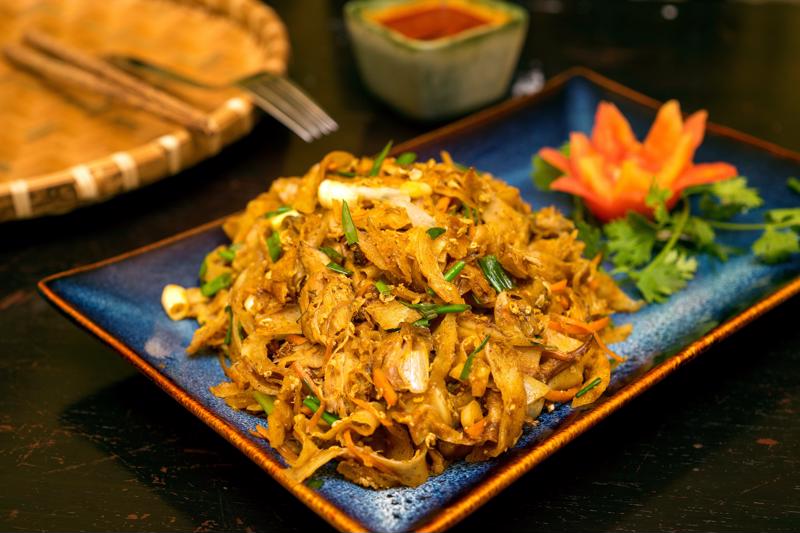Sri Lankan food has been on international foodies’ radar for a while. In 2017, the late Anthony Bourdain visited several staples in the capital, Colombo. But could 2019 be a breakout year for Sri Lankan cuisine? The BBC seems to think so. It even listed Sri Lankan cuisine as No. 1 on its list of the top 15 food trends for 2019. This especially makes sense for the U.K., where several highly successful restaurants have opened within the past few years. The biggest names include Hoppers in London and the Coconut Tree in Cheltenham – with a new site soon to be unveiled in Cardiff.
But Sri Lankan cuisine may also have a big future in the U.S. The cuisine is burgeoning here at best, but awareness of the rich culinary tradition is slowly but surely spreading. Austin, Texas recently hosted a cooking demonstration of Sri Lankan food this May in celebration of Asian American & Pacific Island Heritage Month, according to Downtown Austin Patch. Auguste Escoffier culinary arts students studying at the Austin campus, and elsewhere, hopefully had the chance to attend. And if not, they should start familiarizing themselves with Sri Lankan cuisine before it becomes a culinary tour de force.
A food of many influences
Sri Lankan cuisine has been greatly influenced by many cultures, including the Dutch, English, Portuguese, Indians, Malays, Arabs and more, according to the country’s Ministry of Housing, Construction and Cultural Affairs. Between the 1500s and the mid-1900s, the island-nation then known as Ceylon was occupied at different times by the Portuguese, Dutch and British before finally achieving independence in 1948. The western colonizers introduced several ingredients from other colonial regions that are now relatively common in Sri Lankan cuisine. These include carrots, beets, cabbage, leeks, mangos, rambutan, apples, pears, grapes, pineapple and papaya.
Hundreds of years before there was a western presence in Sri Lanka, Muslim traders introduced some of the country’s sweeter staples such as watalappan, but also certain ingredients from Asia Minor such as kale. And well before then, Sri Lankans had already cooked with rice, ghee, coconut milk, honey, pork, venison, fish, peacock meat, garlic, turmeric, curry and a variety of other endemic vegetables and spices. Modern Sri Lankan cuisine is a medley of many of the ingredients that were prominent at different periods in the island nation’s storied past.
 Kottu is one of the most popular dishes in Sri Lanka.
Kottu is one of the most popular dishes in Sri Lanka.Signature Sri Lankan dish
Lamprais
Lamprais if particularly common among the Burgher community in Sri Lanka, which is made up of descendants of Europeans. The word “Lamprais” is Dutch and it translates to “packet of food,” according to the BBC. This is fitting. The dish combines eggplant, boiled eggs, rice, cloves, pol sambola (ground coconut, onions, chilies and fish), frikkadels (Dutch-style beef balls), and other meats, spices and vegetables in a banana leaf before being baked in the oven.
Hoppers
Hoppers are the pancakes of Sri Lanka. They’re made from coconut milk, coconut water, fermented rice flour and a small amount of sugar. Traditionally, the batter was heated in half of a coconut shell to give it a distinct bowl shape, but hoppers can also be cooked in a skillet or a rounded pan. While cooking, crack an egg into the center. Find a simple hopper recipe from Food Republic here.
Kottu
Kottu is a common street food in Sri Lanka. It’s made by slicing up a flat, crispy bread called godamba rotti, frying it up, and then adding vegetables and meats before finally dousing the Sri Lankan equivalent of stir fry with spicy curry.
Watalappan
This simple but tasty dessert is a coconut custard pudding made from thick coconut milk, roasted cashews, brown sugar, kithul jaggery, eggs and various spices. Check out this recipe from My Sri Lankan Recipes.
Of course, there are plenty more Sri Lankan dishes worth trying than we’ve listed here if you’re an Austin culinary student. We encourage you to take a deeper dive into Sri Lankan cuisine, and other cooking traditions, to broaden your culinary horizons.




